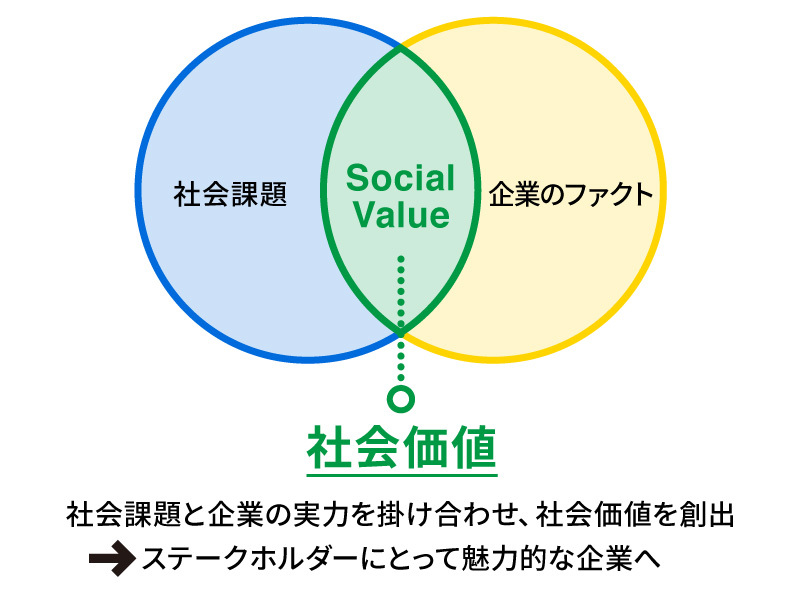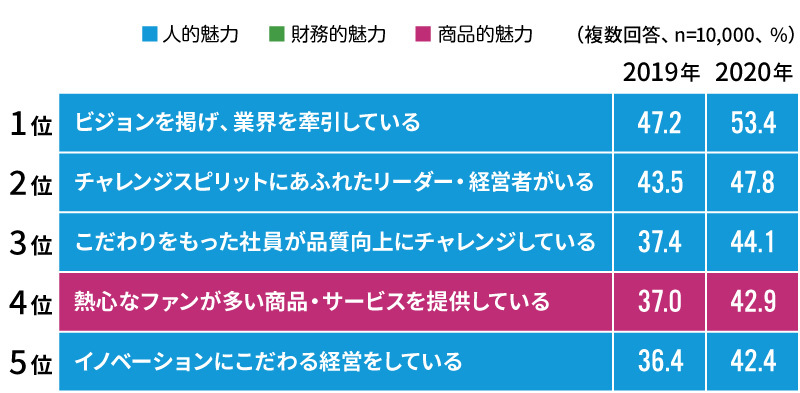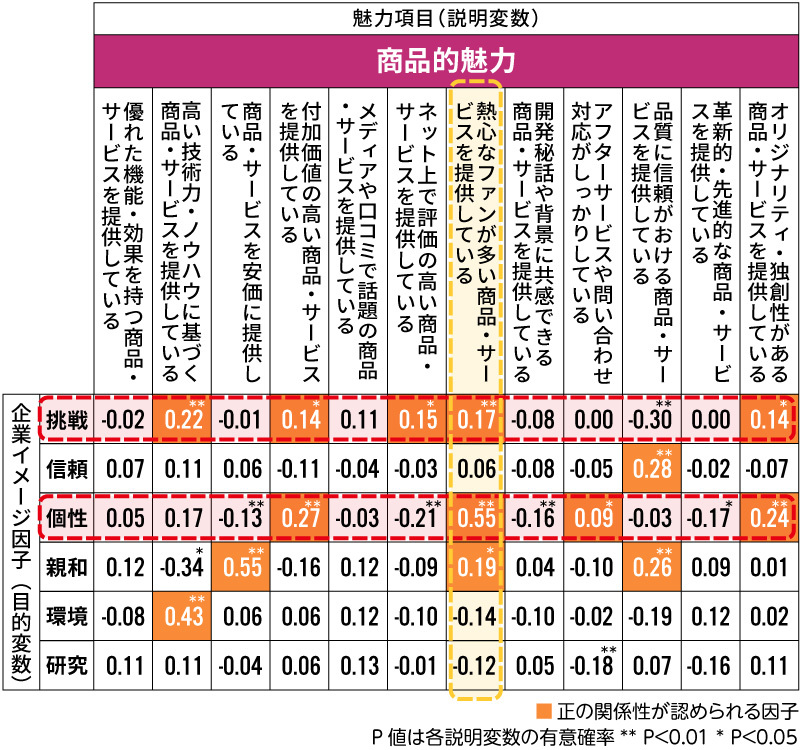This series introduces what "value-creating" PR—now essential for companies—entails.
Part 2 explained the methods and importance of creating social value, which is now closely watched not only by investors but also by the general public.
[Figure 1] Conceptual Diagram of Social Value

This time, we present two findings from the "Attractiveness Branding Survey" (※1) conducted by the Corporate Public Relations Strategy Institute (abbreviated as C.S.I., within Dentsu Inc.):
・Corporate facts that contribute to the corporate brand
・Corporate facts correlated with consumers' perceptions of the company
※1 = Attractiveness Branding Survey
Analyzed the appeal of 200 companies across 20 industries based on responses from 10,000 consumers
For issues resonating with stakeholders (Chart 1: "Social Issues"), consider: "What initiatives can our company undertake?", "Which company facts do consumers find appealing and contribute to corporate value?", and "Do these contribute to shaping consumers' corporate image?" (Chart 1: "Company Facts").
The fact most contributing to corporate image formation is "Setting a Vision and Leading the Industry," one aspect of human appeal.
Our institute researches facts that contribute to corporate branding. The proposed "Attractiveness Branding Model" classifies the appeal that constitutes a corporate brand into three categories: "Human Appeal," "Financial Appeal," and "Product Appeal." Furthermore, it sets 12 key items per category, totaling 36 facts. This is an indicator that places the focus of measuring corporate value on "attractiveness." [Figure 2].
[Figure 2] Attractiveness Branding Model

【Definition of the Three Attractiveness Factors】
Human Appeal
The appeal conveyed by the "individuals" comprising the company and by the "corporate entity" through its business activities, such as leadership, workplace culture, and responsiveness to social issues.
Financial Appeal
Attractiveness related to excellent financial performance and the systems and initiatives supporting it, such as growth strategy, stability, (mid- to long-term) profitability, and risk & governance management.
Product Appeal
The appeal conveyed through products and services, including cost performance, safety, after-sales service capabilities, complaint handling, originality, and innovation.
In the 2020 " 5th Attractiveness Branding Survey," "Human Appeal" was perceived as the most attractive among the three categories of "Human," "Financial," and "Product Appeal" [Figure 3]. "Human Appeal" ranked first for the fifth consecutive year.
[Figure 3] Composition Ratio of the Three Attractiveness Categories

Furthermore, examining the specific breakdown of the three types of appeal reveals that four of the top five items belong to "human appeal," indicating that human appeal significantly contributes to a company's overall appeal [Figure 4]. While the ranking order remains the same as last year, the proportion has increased, suggesting a growing tendency for "human appeal" to be recognized as a key element of corporate appeal.
[Chart 4] Top 5 Attraction Items Out of 36 Total Items 
All Six Factors Shaping Corporate Brand Correlate with "Human Appeal"
Previous communication efforts focused on creating buzz to cultivate corporate brands. However, changes in information distribution structures—such as consumers now being able to share anything via social media—have made it increasingly difficult to capture consumer hearts solely through mass media image campaigns or fleeting trends. Activities that communicate a company's appeal based on its "facts" have become crucial.
Meanwhile, corporate branding is only established when the brand reaches consumers through various communication activities. It cannot be achieved solely by having the "ideal image" a company wants stakeholders to perceive or the "facts" the company possesses to approach that image [Figure 5].
In other words, it is crucial to understand the gap between the company's "desired image" and the current perceptions consumers hold of each company. Furthermore, it is vital to consider whether this gap can be bridged using the company's own "facts," and if not, what actions should be taken.
[Figure 5] 
Therefore, the Appeal Branding Survey also gathers impressions of each company's brand and examines which keywords constitute the factors forming the brand. As a result, we identified six factors: "Challenge," "Trust," "Individuality," "Affinity," "Environment," and "Research."
Figure 6 analyzes how each of these six factors correlates with the aforementioned appeal items.
[Figure 6]

This chart quantifies the degree of relationship between the 36 fact items and the six corporate image factors using a method called "multiple regression analysis." The orange areas indicate particularly strong relationships.
The results show that the "Challenge" factor, which includes image items like growth potential, innovation, and flexibility, correlates with facts such as "Leaders/managers brimming with a challenging spirit" under human appeal, "Mid- to long-term management plans" under financial appeal, and "Providing products/services based on high technical capabilities and know-how" under product appeal.
Furthermore, the "Uniqueness" factor, which includes image items like sense, concept, and conviction, strongly correlates not only with product appeal factors like "providing products/services with many enthusiastic fans," but also with numerous human appeal factors such as "management committed to innovation" and "dedicated employees challenging themselves to improve quality."
In other words, if a company wants consumers to perceive it as a "challenging and unique enterprise," it is crucial to cultivate and communicate facts such as demonstrating leadership to drive the industry forward or building a dedicated fan base for its products and services.
Furthermore, examining other factors reveals that elements contributing to "trust" are linked to human appeal items like "setting a vision and leading the industry" and "sincere, trustworthy employees." This shows that human appeal is connected across all factors, not just product appeal.
These results reveal that, particularly from a corporate branding perspective, to be chosen as an attractive company, it is crucial not only to communicate the appeal of the products and services offered through corporate activities but also to highlight the appeal of the "corporate entity" itself—its employees and leadership—as a key factor influencing the corporate brand. Therefore, by identifying these company-specific facts and carefully communicating them, a corporate brand closer to reality—rather than one driven by image without substance—can be cultivated, bringing the company closer to its "aspirational state."
In Chapter 8 of our institute's December 2020 publication, New Strategic Thinking in PR Management, we interviewed Professor Kunio Ito, Specially Appointed Professor at Hitotsubashi University Graduate School of Business Administration. Professor Ito also emphasizes the importance of human capital (the importance of dialogue) within his concept of "Value Creation Management."
[Figure 1] Conceptual Diagram of Social Value (Reprinted)

This time, we explained the "corporate facts" that generate social value. Furthermore, the value of the products and services that companies will provide going forward must also incorporate social value that solves social issues.
Next time, we will introduce methods for formulating corporate "value creation" PR strategies—specifically, strategies for "value creation" that solve these social issues.
[Survey Overview]
■5th Attractiveness Branding Survey
Survey Participants: 10,000 men and women aged 20-69 nationwide

Survey Method/Period: Online survey, June 24-30, 2020
Questions: Companies perceived as attractive, corporate image, appealing facts, information sources for facts, actions taken after perceiving attractiveness
*This survey rounds figures to the nearest whole number.















